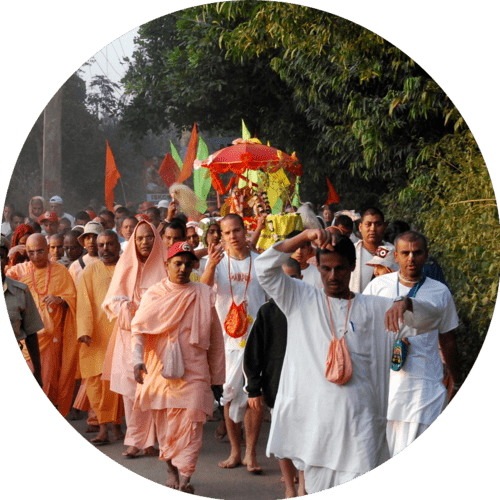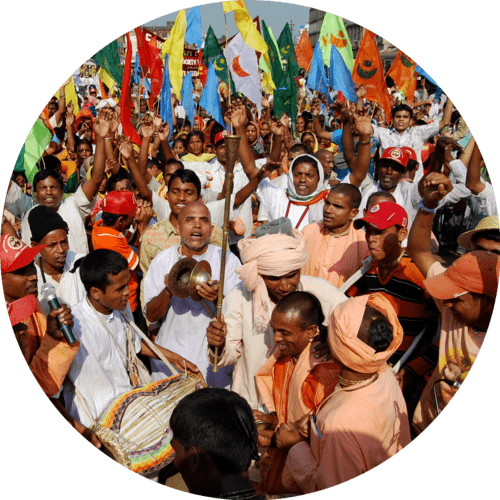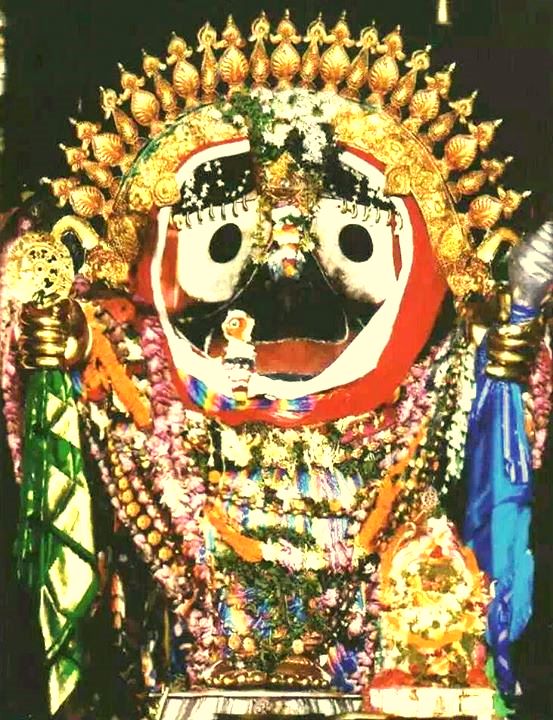SRI KSETRA
PARIKRAMA
The holy dhams of Vrindavana, Navadvipa,and Nilacala-dhama are nondifferent.Just as devotees perform Vrajamandala and Gaura-mandala parikrama, in the same way devotees perform parikrama of Sri-ksetra, by which one is freed from sinful reactions from unlimited previous births. The Srimad-Bhägavatam states:
barhāyite te nayane narāṇāṁ
liṅgāni viṣṇor na nirīkṣato ye
pādau nṛṇāṁ tau druma-janma-bhājau
kṣetrāṇi nānuvrajato harer yau
The eyes which do not look at the symbolic representations of the Personality of Godhead Vishnu [His forms, name, quality, etc. are like those printed on the plumes of the peacock, and the legs which do not move to the holy places [where the Lord is remem¬bered] are considered to be like tree trunks. (2.3.22)



In the Skanda Purana it has been mentioned that if, after achieving the human form of life, one does not engage in parikrama to Sri Hari-ksetra, then his life is useless.
samsara-maru-kantara
nistara-karana-ksamaus
laghyau tav eva caranau
yau hares tirtha-gaminau
The feet which move around the holy places connected with Sri Hari are truly praiseworthy, because by this action one can cross over the difficult path of the desertlike samsara, or material existence. In the Skanda Purana it is stated that Vidyapati, after taking darsana of Nila Madhava and preparing to return to his home, said, “Very soon I will start my journey after completing parikrama of this mahaksetra. I have heard from my friends that those who circumambulate Sri Purushottama ksetra, the destroyer of all sins, which is situated near the sea beach and decorated by the most beautiful blue mountain,will attain the result of circumambulating the earthly planet three times.”
Vamadeva Samhita states that one who performs parikrama of Sri-ksetra-mandala attains the result of an Asvamedha-yajna at every step. Sri-ksetra is shaped like a sankha, or conch shell. Thus in the Skanda Purana it is called Sankha-ksetra. This Sankha-ksetra is spread over five krosas (one krosa is two miles, or 3.2 kilometres): two krosas are submerged in the ocean, and three krosas of land are above the surface of the ocean.
In Skanda Purana it is written:
bhramanti térthany anyani
tyaktvaitat ksetram uttamam
phalasa-modakais taptva
labhante srama-jaa phalam
Those who leave this place (Purushottama ksetra), which is the best among all places, and travel to other tirthas, being satisfied by the modaka of hope for result, they simply
receive the hard labor.
